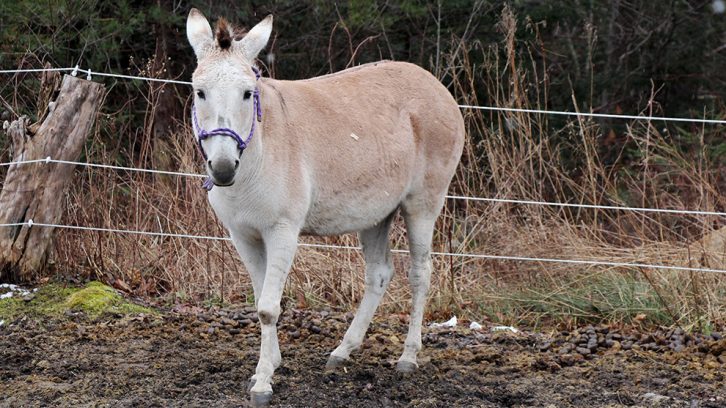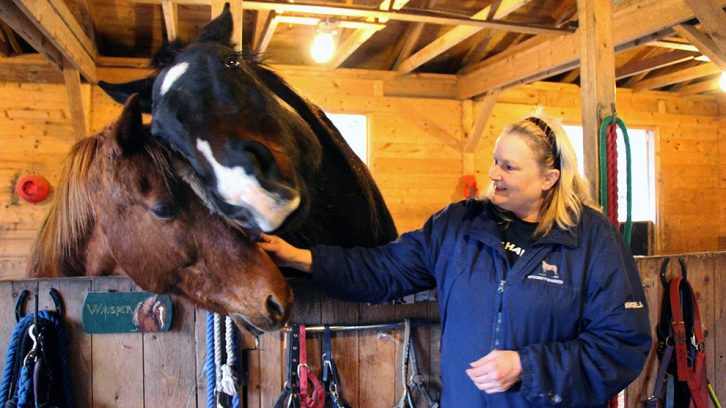Rescue
Meet Zelda the zonkey
From American peril to a Canadian haven

caption
Zelda the zonkey at Integrity's Haven Equine Rescue Centre.
caption
Zelda the zonkey at Integrity’s Haven Equine Rescue Centre.
Zonkeys — as they are most commonly known — are part of the zebroid family, which is any zebra-based hybrid. These mammals don’t normally breed, and the majority of them are created by humans. Zelda is the product of a male zebra and female donkey, but her backstory is otherwise unknown.
One day Zelda popped up on an animal rescue page on Ashleigh Benton’s Facebook. When it became apparent that no one would rescue her, Benton, a student from Halifax, paid to stop Zelda’s slaughter. She developed a GoFundMe page in order to bring the exotic animal to a new home on this side of the border.
That’s when Angela Welburn at Integrity’s Haven Equine Rescue Centre (IHERC) got involved.
“Ashleigh did it backwards,” says Welburn. “She took a big risk putting out the initial funds and it would have been a shame if she couldn’t find Zelda a home. But her heart is bigger than you can imagine.”
Welburn runs IHERC, a non-profit society for rescued animals, at her home in Chester Basin. Welburn rescues horses, cats and dogs, but when Benton approached her to adopt Zelda, Welburn couldn’t say no. The centre specializes in animals that have been wronged and animals that are old or diseased.

caption
Welburn with two of her “spoiled” horses.
Welburn calls the centre a sanctuary — an animal “hospice” of sorts.
Zelda is a rare exception to her rule. Upon arriving at IHERC three weeks ago, the zonkey was skittish and afraid. Zelda is now physically healthy, and Welburn says she’s begun warming up to her surroundings. But because of her abnormality, she will stay at the sanctuary forever. This way, Benton can remain involved in Zelda’s life as well.
Although it’s not uncommon to find zonkeys in zoos, such as the one at Nova Scotia’s Oaklawn Farm Zoo, Welburn says it’s rare to see them in private barns. As far as Welburn’s research has taken her, Zelda is the only privately owned zonkey in Nova Scotia.
Welburn says Zelda was likely surrendered to the slaughterhouse because she wasn’t a “cool-looking” zonkey. Zelda’s stripes are faintly visible on her legs, but Welburn says some people are “disappointed” when they see her. Welburn says every day with Zelda is a learning curve, but she thinks the animal is beautiful.
Unlike some crossbred animals, zebroids are infertile and don’t have much of a practical use. This is because despite their similarities, animals like donkeys and zebras have a different number of chromosomes. It’s no surprise that unless accepted by a zoo or animal sanctuary, unwanted zonkeys find themselves on death row.
Welburn says it’s surprisingly easy to dispose of an unwanted equine animal. Most feedlots and auction houses accept animals without any paperwork, and then sell them to slaughterhouses if no one adopts them.
Equine slaughterhouses are basically a thing of the past in the United States, but countries like Canada and Mexico still have lenient laws on horse slaughtering. It’s becoming increasingly common for American horse ranchers to ship “unsound equines” up to Canada to be slaughtered.
In Zelda’s case, it was a Canadian who stepped in to save her.

